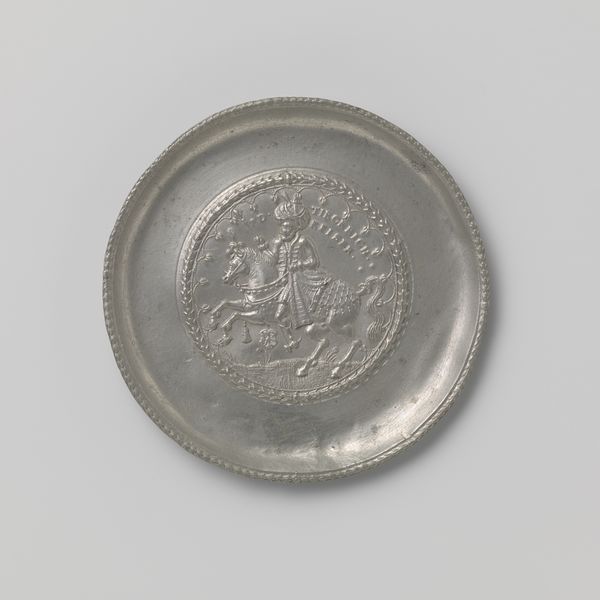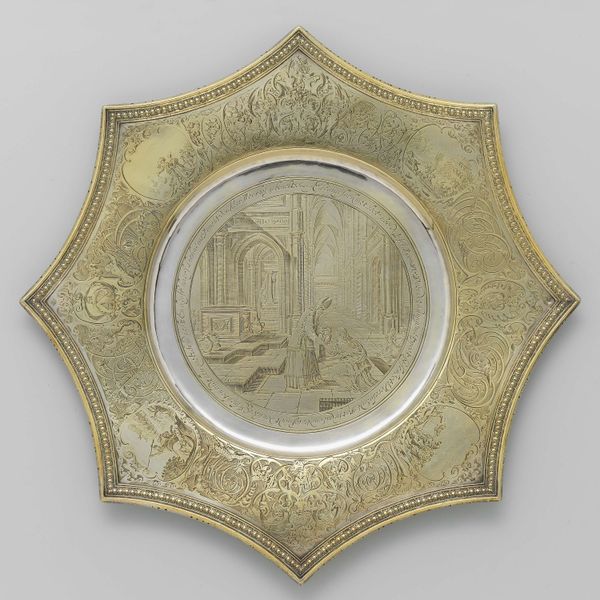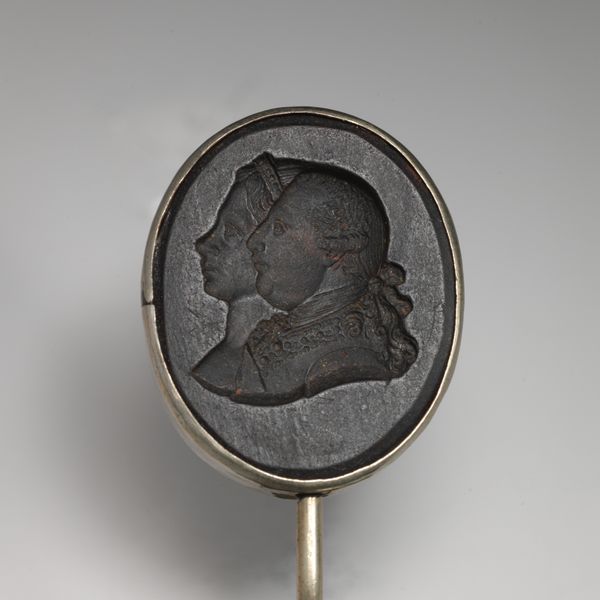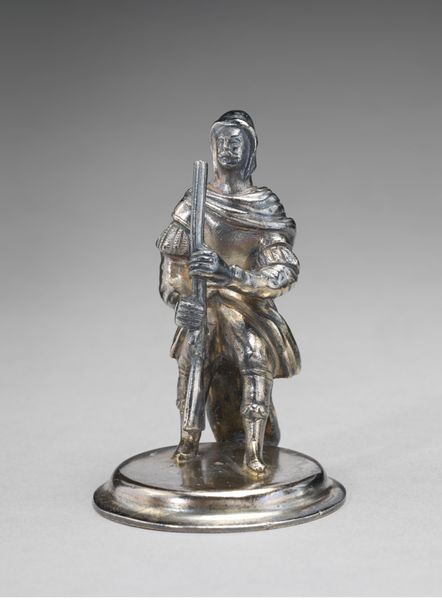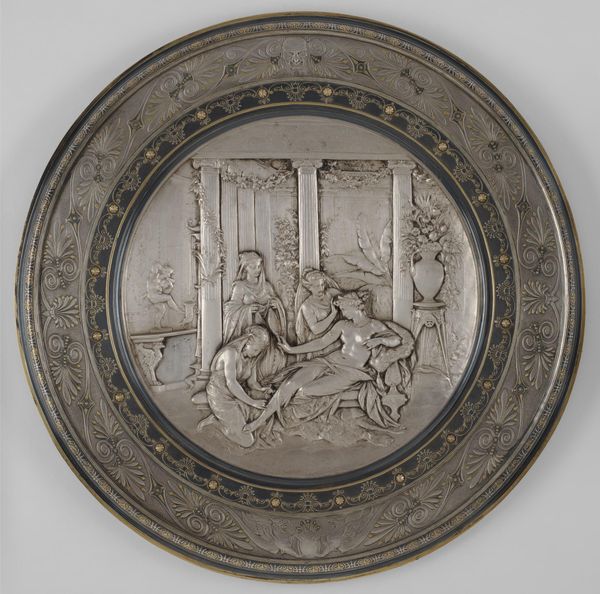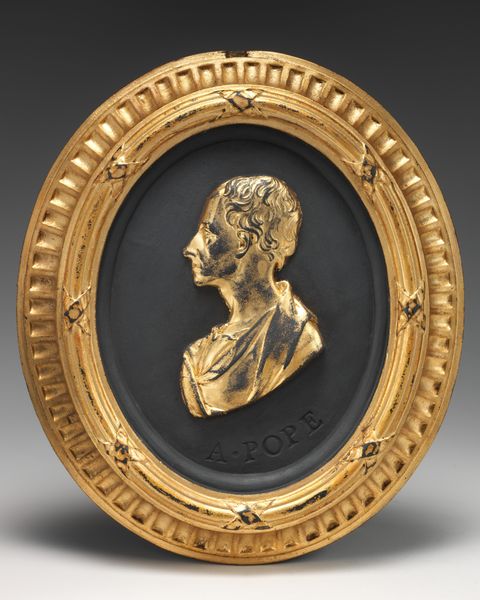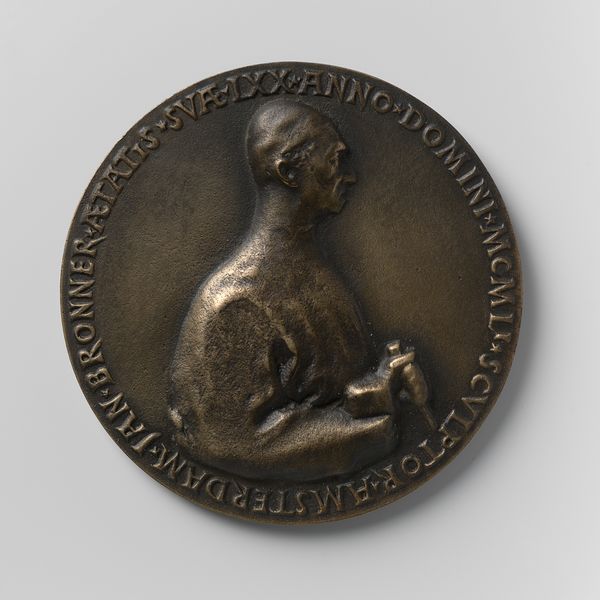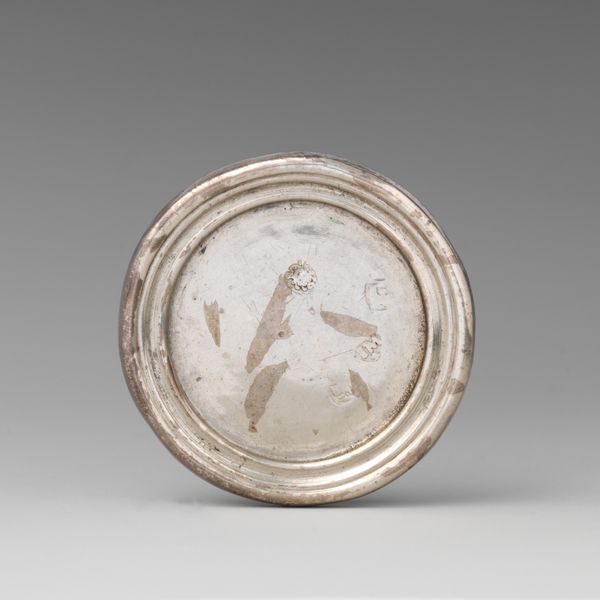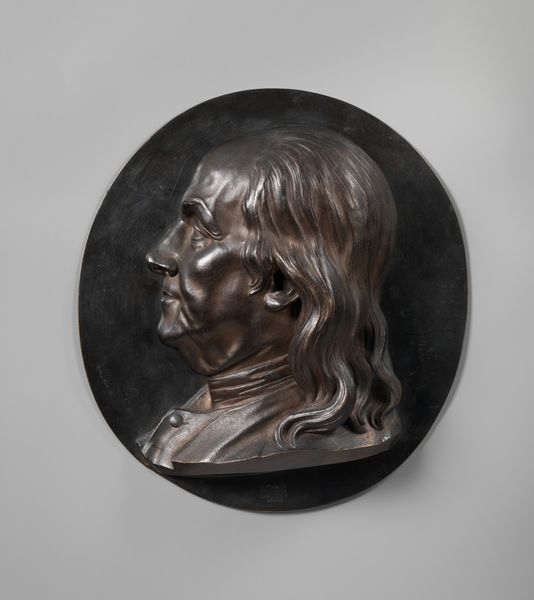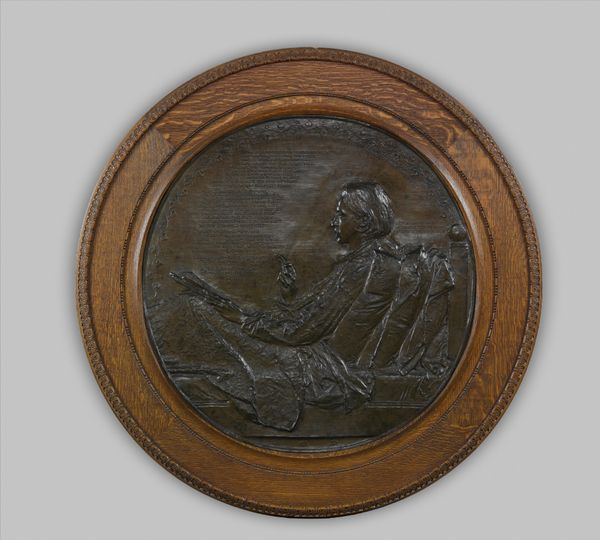
metal, sculpture
#
portrait
#
metal
#
sculpture
#
ancient-egyptian-art
#
geometric
#
ancient-mediterranean
#
sculpture
#
history-painting
Dimensions: overall: 6.7 x 6.8 x 3.9 cm (2 5/8 x 2 11/16 x 1 9/16 in.)
Copyright: National Gallery of Art: CC0 1.0
Curator: Immediately, the sheen and weight of this metal sculpture invoke both strength and solemnity. What are your first impressions? Editor: My eye is drawn to those concentric rings etched into the surface. They radiate outward, almost like the rings on a tree, mapping the process of its creation, it gives the sense of labor. Curator: That's insightful. We're looking at "Head of a Pharaoh," estimated to be from the 19th century. It is made of metal. And this places it squarely within a period of renewed interest in ancient Egypt. Do you see reflections of the ancient world here? Editor: Definitely, The choice of metal and the clean, geometric shape speak to a modern interpretation of Egyptian motifs. The original techniques employed by artisans in dynastic Egypt must have involved completely different scales and tools to cut stone. Curator: Absolutely. The pharaoh, presented in profile, adheres to canonical representation but that sleekness seems decidedly neoclassical and almost… idealized. Editor: I find the simplification of forms interesting. It’s not merely a copy of pharaonic imagery but a reinterpretation using the aesthetics and techniques of its time. I wonder about the function this piece was designed to fulfill. Curator: The head evokes potent symbols – power, divinity, and enduring legacy. Pharaohs, considered divine rulers, controlled not only political and military forces, but also the cosmic order, which were literally embodied in art, architecture, and ritual objects. Editor: The medium and manufacturing process would change how ancient ideals of power were understood in modern industrial society. How mass production or mechanization may change such perceptions of authority. Curator: The act of replication transforms cultural memory. This metal head isn’t an ancient artifact, but it reminds us of continuous interpretation, where the meaning of pharaohs changes across millennia, shaping symbols over time. Editor: It truly serves as a fascinating emblem of how our connection to ancient traditions is shaped and reshaped through our present realities of creation, material and work. Curator: Indeed, a small object that yields a great amount of social reflection!
Comments
No comments
Be the first to comment and join the conversation on the ultimate creative platform.
